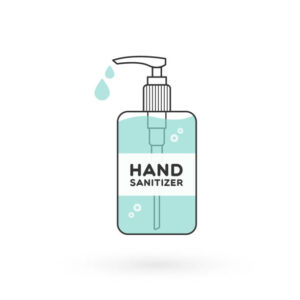The following article was published in TRANSCAER’s April newsletter.
During the COVID-19 pandemic, the US Department of Transportation (DOT), Pipeline and Hazardous Material Safety Administration (PHMSA) granted specified relief for the transportation of alcohol-based hand and surface sanitizers in many types and sizes of packaging. Although DOT regulations already allowed the transportation of sanitizers (ignitable or flammable liquids) in steel drums, users should bear in mind that warehouse and workplace safety is regulated by the Occupational Safety and Health Administration (OSHA) and they did not issue any relief to fire codes or regulations for the storage of these materials. Further, many states and municipalities regulate the storage of flammable and combustible materials through the adoption of NFPA Code 30, which also remains unchanged.
Sanitizer Chemical and Physical Characteristics
The following table illustrates the properties of sanitizer strength alcohols. Keep in mind that there may be flash point depression or boiling point elevation in sanitizers with additives like aloe, glycerin or fragrance.
Flash point is the temperature at which a particular chemical gives off enough vapor to ignite in air. These alcohol solutions have a room temperature flash point, which the National Fire Protection Association (NFPA) would classify as a Class 1C material. The UN/DOT Classification would be a Class 3 flammable liquid, packing group II.
Risk Factors to Consider with Sanitizer Solutions
Information supporting the safe storage of flammable and combustible liquids is outlined in the NFPA Code 30 Flammable and Combustible Liquids Code. The two most important factors that define the risk associated with the storage of flammable and combustible liquids like a sanitizer is the container type and size as well as the properties of the liquid in the container. Regarding container performance under fire conditions, steel drums when equipped with fusible plugs and paired with an adequately designed foam water sprinkler system will retain their integrity. However, metal containers can over-pressurize and rupture when exposed to fire. But the likelihood of this occurring can be significantly reduced by using a relieving-style container (the use of fusible plugs).
Steel drums are allowed under NFPA Code 30 for use with ignitable liquids classed as IA, IB, and IC, II and IIIA and IIIB liquids in both protected and unprotected storage. For more information on packaging in steel drums, contact the Industrial Steel Drum Institute (ISDI) at www.whysteeldrums.org.
For additional information:
Codes and Regulations:
- The Department of Transportation Regulations for Steel Drums Code of Federal Regulations Title 49 §178.504
- NFPA Code 30
Resources:



